.jpg?width=300&name=Annual%20Plan%20One%20Page%20Strategic%20Plan%20%20(IP).jpg) How did your annual planning work for 2020?
How did your annual planning work for 2020?
If you’re like most businesses, it had a few if not a lot of dents in it.
Greg Crabtree’s Simple Numbers 2.0 Webinar on Thursday shared many industries including restaurant and hotel business were greatly affected by COVID19. Just as dramatic, Crabtree revealed many had their best years ever! Best of all many are sitting on a lot of cash. The PPP provided businesses who were less or unaffected by COVID to stash away cash and put them in a position they’ve not been in for quite some time.
Crabtree believes once confidence is restored; the economy should recover quickly.
He also indicates while many businesses expected mergers and acquisitions to pick up this hasn’t been the case, primarily because the premium being paid for businesses many thought would decline, hasn’t.
By now you should have your Annual Plan for 2021 in place. If you don’t these ideas may be helpful to organizing to make best use of your time.
Annual Planning Agenda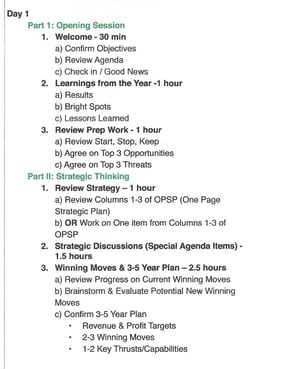
While your annual plan should focus on results, the process you follow is important to ensure you create a solid plan for next year.
See the pictures here for a recommended Agenda. If you’d like more specific examples and a template, email me here.
Here are a few keys, and one specific recommendation for 2021:
Step 1: Understand Your Current Environment
Before you start planning, you need to have a good understanding of where you currently are. Everyone will come into the planning session with their unique perception of how things are going and some ideas for improving and growing the business. Start your meeting by getting everyone sharing their top of mind thoughts. Allow time for introspection at the beginning of the planning session to engage everyone on the team. It will establish context for the strategic and future-directed conversations you will soon be having.
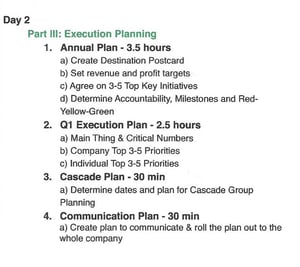 Learn from the previous year - Revisit last year’s plan (Targets, Theme, Key Initiatives), discuss the actual results. Ask the team: What did we accomplish this year? What improvements to the business did we make? What were our victories and bright spots? What did not go as planned? Most importantly, what lessons did we learn this year? The goal of this exercise is to reflect over the past year, gather insight into what worked well and what didn’t, what you learned during the year, and what is different today than it was a year ago.
Learn from the previous year - Revisit last year’s plan (Targets, Theme, Key Initiatives), discuss the actual results. Ask the team: What did we accomplish this year? What improvements to the business did we make? What were our victories and bright spots? What did not go as planned? Most importantly, what lessons did we learn this year? The goal of this exercise is to reflect over the past year, gather insight into what worked well and what didn’t, what you learned during the year, and what is different today than it was a year ago.
- Start, Stop, Keep Exercise (Shared last blog: Start, Stop, Keep – Required Annual Planning)
 Opportunities and Threats - Different from Strengths and Weaknesses, which are internal, Opportunities and Threats should be external conditions, forces or trends that could impact your business. When considering Opportunities and Threats during Annual Planning, it is good to ask the team to think in terms of impact to your 3-5 Year Plan. Choose 3-5. We prefer to do a SWT, Strengths, Weaknesses and Trends. The world is much more disruptive today, and the opportunities and Threats become visible in this Trends reflection.
Opportunities and Threats - Different from Strengths and Weaknesses, which are internal, Opportunities and Threats should be external conditions, forces or trends that could impact your business. When considering Opportunities and Threats during Annual Planning, it is good to ask the team to think in terms of impact to your 3-5 Year Plan. Choose 3-5. We prefer to do a SWT, Strengths, Weaknesses and Trends. The world is much more disruptive today, and the opportunities and Threats become visible in this Trends reflection.
Step 2: Review Strategy & Discuss Winning Moves
Annual Planning should include a good balance of strategic thinking and execution planning. In 2012: Planning or Strategy we discussed the distinction between planning and strategy. Strategic thinking is a process, not an event, you need to think ahead about how to use your time most effectively. If you have a fully developed long-term strategy, you could use this time to review your strategy with the team. If you have some pieces developed and some that need more work, spend time focusing on just one strategic topic. While many companies struggle to execute their plans, the reality is most companies fail not due to execution, rather due to poor decisions.
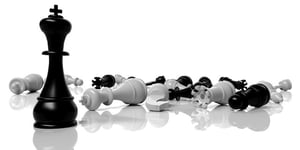 To understand what strategy is, review Michael Porter’s definition of strategy: creating a unique and valuable position involving a set of differentiating actions. Developing a strategy is all about making decisions. You must decide what you are going to do and what you are not going to do, all in the context of your Core Customer. Shannon Susko in 3HAG WAY: The Strategic Execution System that ensures your strategy is not a Wild-Ass-Guess!, “The truth is that the more time you spend on strategy with your team (not by yourself!), the better the whole team will execute, because the clearer everyone will be on the day-to-day decisions that drive your 3HAG and BHAG.”
To understand what strategy is, review Michael Porter’s definition of strategy: creating a unique and valuable position involving a set of differentiating actions. Developing a strategy is all about making decisions. You must decide what you are going to do and what you are not going to do, all in the context of your Core Customer. Shannon Susko in 3HAG WAY: The Strategic Execution System that ensures your strategy is not a Wild-Ass-Guess!, “The truth is that the more time you spend on strategy with your team (not by yourself!), the better the whole team will execute, because the clearer everyone will be on the day-to-day decisions that drive your 3HAG and BHAG.”
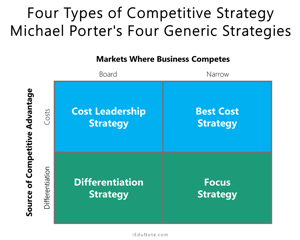 Too many businesses play lip service to how they differentiate. They fail to explore what their white space truly is. How distinctively unique and different they are from their competition. Some are not even aware who their competitors are, what their strengths are, or even what place they are in the market.
Too many businesses play lip service to how they differentiate. They fail to explore what their white space truly is. How distinctively unique and different they are from their competition. Some are not even aware who their competitors are, what their strengths are, or even what place they are in the market.
This is a recipe for disaster. We see the results in the number of failed businesses due to COVID. 35% of Business Owners are Unable to Pay Rent. These outcomes were going to happen, COVID just accelerated them.
Your business needs to focus on strategy. If you failed to improve revenue growth this year, you’re falling behind. Strategy Decisions are all about top line revenue growth! We’ll explore resources tools and ideas for strategy development next blog. Contact us today to schedule a free exploratory meeting.
Growth demands Strategic Discipline.
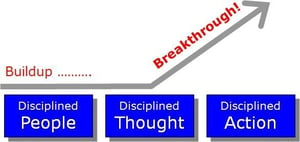 To build an enduring great organization, requires disciplined people, disciplined thought, disciplined action, to produce superior results, and make a distinctive impact in the world.
To build an enduring great organization, requires disciplined people, disciplined thought, disciplined action, to produce superior results, and make a distinctive impact in the world.
Discipline sustains momentum, over a long period of time, laying the foundations for lasting endurance.
-2.jpg?width=300&name=3%20Disciplines%20of%20Execution%20(Strategic%20Discipline)-2.jpg) A winning habit starts with 3 Strategic Disciplines: Priority, Metrics and Meeting Rhythms. Forecasting, accountability, individual, and team performance improve dramatically.
A winning habit starts with 3 Strategic Disciplines: Priority, Metrics and Meeting Rhythms. Forecasting, accountability, individual, and team performance improve dramatically.
Meeting Rhythms achieve a disciplined focus on performance metrics to drive growth.
Let Positioning Systems help your business achieve these outcomes on the Four most Important Decisions your business faces:
|
DECISION |
RESULT/OUTCOME |
|
PEOPLE |
|
|
STRATEGY |
|
|
EXECUTION |
|
|
CASH |
|
Positioning Systems helps mid-sized ($5M - $250M) business Scale-UP. We align your business to focus on Your One Thing! Contact dwick@positioningsystems.com to Scale Up your business! Take our Four Decisions Needs Assessment to discover how your business measures against other Scaled Up companies. We’ll contact you.
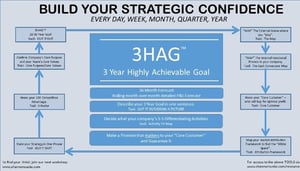 NEXT BLOG – 2021 Critical Decision - Strategy
NEXT BLOG – 2021 Critical Decision - Strategy
If you’ve survived 2020, no matter whether you grew revenue or not, strategy is the most important decision to focus on. Disruption accelerated in 2020. Your business model is either in jeopardy or will be soon. It’s time to plot a course for your future. Next blog 3HAG Strategy tools to create a unique and valuable position involving a set of differentiating actions.






.jpeg?width=150&height=135&name=Hand%20with%20marker%20writing%20the%20question%20Whats%20Next_%20(1).jpeg)

